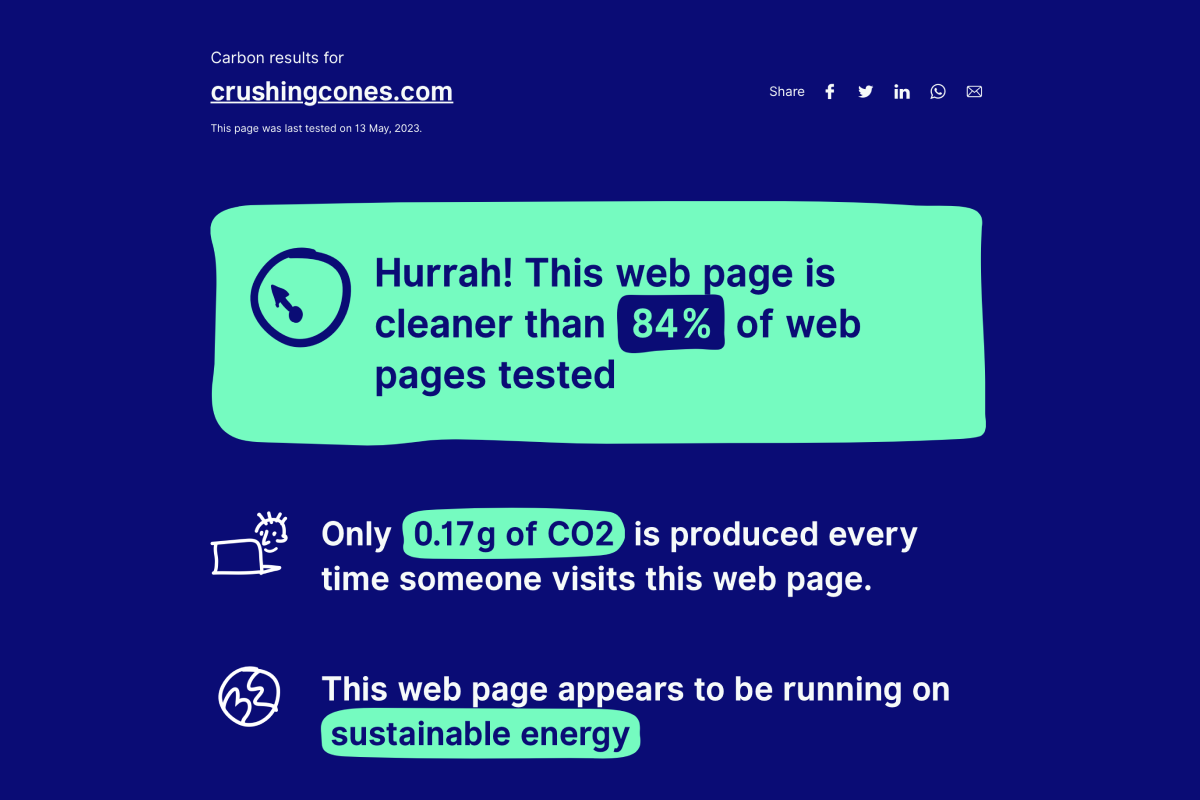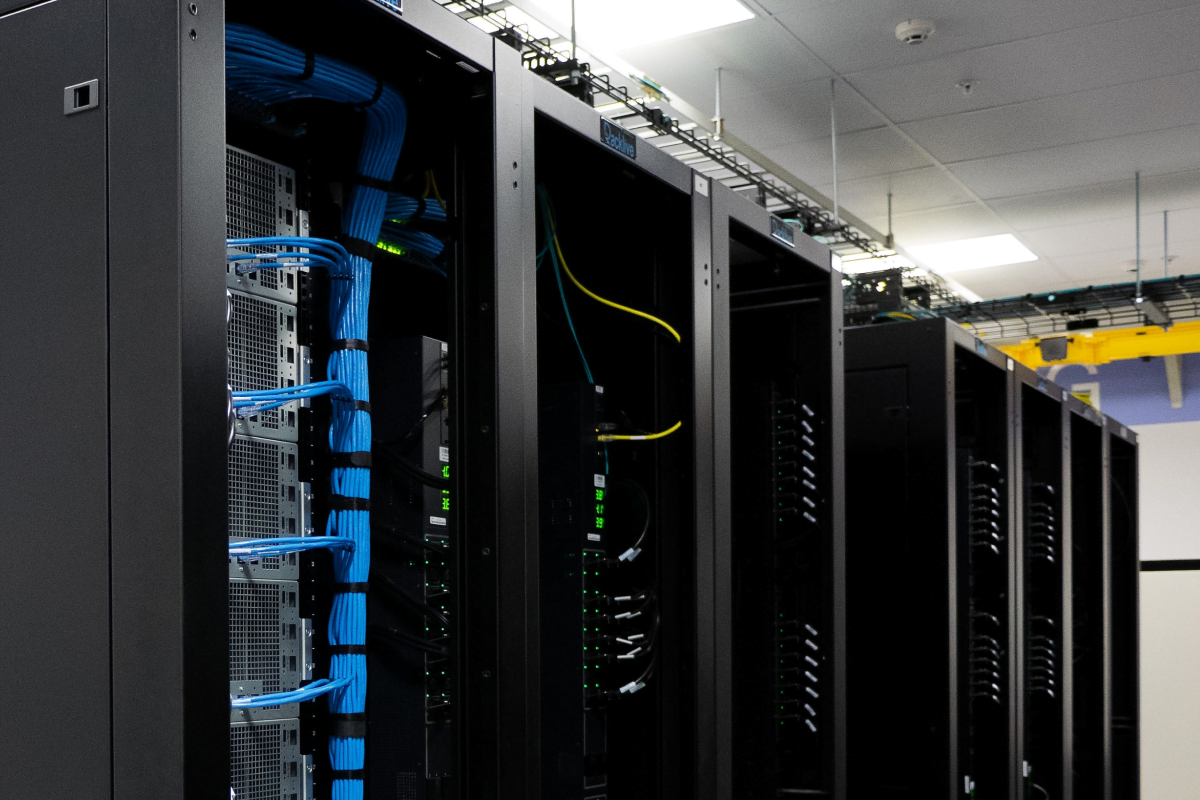You might be wondering what a sustainable web design is or how a website can possibly be sustainable.
And let’s be honest. It’s not the first thing that comes to our minds when designing a website. But with over 1.13 billion websites on the internet, countless servers and data-centers require electricity and cooling, which can contribute negatively toward our environment.
Of course, we can’t do without websites as they are an integral part of a business or organization. But you can make some changes that can not only cut down on emissions, but make a positive impact on your company’s growth.
Ready to get your website growing sustainably? Let’s get started.
Reduce Website Bloat
I’d argue that this is one of the most important changes you can make for your website. Because it doesn’t just contribute toward a sustainable web design, but it also leads to improved sales.
Let me explain.
When someone clicks to visit your website, the server hosting it will run a number of processes before sending back your website in full. This short burst of activity demands more electricity and with more energy comes more heat. With that, more cooling is needed to keep the server operating at an ideal temperature.
Now imagine hundreds of visits an hour. See where I’m going with this?
In fact, there’s even a website carbon calculator that will tell you the CO2 emissions for each visit to your website.

Optimize For Mobile
With mobile traffic taking over the majority of website visits across the internet, there’s no surprise that mobile first web design has gained popularity. And with smartphone traffic continuing to increase, it opens up a great sustainable web design opportunity.
Smartphones and even tablets have much smaller screen sizes compared to desktops. So images and other assets don’t need to be full sized and can be compressed further. Remember what I mentioned about processing time above?
On top of that, their connection to the internet may not necessarily be as fast as a workstation directly connected to the internet or on WiFi. This means a mobile friendly website built to load quickly is even more important, inherently making it a sustainable web design.
Also, phones and tablets are made much more energy efficient in order to increase battery life. Desktops on the other hand consume much more power and require a constant wall connection.
So if you have website or web app that isn’t already mobile responsive, encouraging your users to view your website with a smartphone instead of a desktop is a great practice and highlights the importance of sustainable web design. As a bonus, you make your website more accessible to those who may not have a desktop or live in areas with slower internet connections.
How does your site compare to ours?
If you reduce the time it takes to load your website, there’s a decrease in energy usage and that makes an impact over time. Not just on the environment, but also your wallet!
And speaking of wallet, how does this improve sales you ask?
Studies show that 40% of users will leave a site if it takes more than 3 seconds to load. So by speeding up your website, you’re increasing the number of users that stay on your website, essentially tackling two birds with one stone.
My next article will provide a detailed breakdown on some ways you can reduce website bloat and speed up your website. I will add a link to the article once complete. You can also find it along with our most recent articles on our blog page once released.

Sustainable Hosting
Going straight to the source, selecting your hosting server and its configuration has the potential to make the greatest impact on your website compared to the other methods in this article. In fact, it’s important enough that I dedicated an entire article toward finding the right hosting platform for your needs.
With growing awareness on climate change and a push for greener energy alternatives, some of the leading hosting providers have launched initiatives and laid out roadmaps toward a more sustainable operation.
This is great news for us, but until data centers around the world reach a carbon neutral stage, there’s decisions we can make as business owners to increase sustainability on the infrastructure side.
Here’s some additional criteria you can add to your search.
- Renewable energy sources – Look out for hosting providers that breakdown how their datacenters are powered. Solar, wind and other renewable energy sources mean carbon emissions are greatly reduced.
- Shared hosting – Consider going with a shared hosting solution instead of a dedicated server if your website allows for it without sacrificing performance. A dedicated server being underutilized is inefficient and will consume more energy compared to hosting your website on a server already hosting other websites.
- Hardware recycling – As servers near their end of life or internal parts start to breakdown, it’s usually just one or two components that are no longer useful. In many cases, other hardware can operate just fine if reused in other servers. Look for hosting companies that mention a robust recycling program.

Sustainable Behaviour
One often overlooked factor that can contribute toward sustainable web design isn’t how the website is made or where it’s hosted, but instead what’s written on it.
The path toward sustainability can only progress forward when a greater number of people are made aware of it.
And what better place to educate new users than your website!
Providing your website visitors with information about the environmental impact of their actions can encourage them to make more sustainable choices. This alone can indirectly make your website more sustainable.
If your business offers certain products or services that are environmentally friendly, you can incorporate persuasive design. Examples include a bright colour scheme or other attention-grabbing UI elements that influence customers into picking a more sustainable option.
Conclusion
If this is your first time learning about sustainable web design, I hope this article has given you some insight into the environmental impacts of websites and how we can make a conscious effort to reduce our website’s carbon footprint. Need some inspiration to get started? Here are some sustainable web design examples.
If you were already familiar with sustainable web design, then I hope you learnt some new changes you can easily adapt to your website that not only makes a positive impact toward the environment, but also leads to an increase in sales and overall growth of your business.
Companies around the world are increasingly realizing the benefits of sustainable web design and adopting sustainable practices that can help progress us all toward a more sustainable future.







